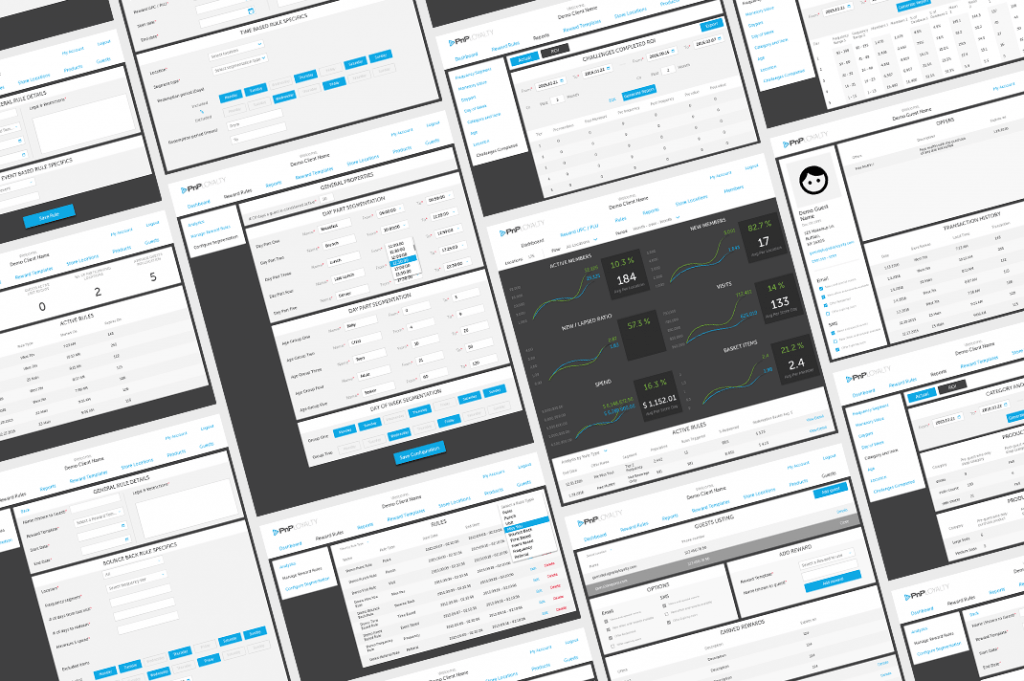App distribution models:
Free (Freemium) and Free-to-Play
About 92% of mobile apps are distributed for free with roughly the same percentage of downloads. All of the mobile app monetization models take place within the app or as a result of user registrations frequently focused on recurring revenue streams.
Examples: Messenger, Pokémon GO, Instagram.
Premium
These are sold directly from the app store.
Sold just like software titles with the majority of revenues generated by upfront sales accounting for less than 10% of downloads, but this does not preclude possibilities for recurring revenue.
Both Google Play and the App Store take a 30% commission, and that’s typical for most independent app stores, too. With Google Play, products purchased in one month are paid out on the 15th of the following month (i.e. October 1 – 31st sales are paid on November 15).
Thus, if you sold your app for $5.00, you would receive $3.50 and Google Play would receive $1.50. If your app cost $50,000 to produce, you would need to sell 17,857 to break-even (not 10,000). Your break-even point will also need to factor in any advertising and promotional activities, too.
Examples: Scanner Pro ($3.99), Model 15 ($22.99), or Minecraft ($6.99).
Hand-picked on start-ups: Does Your Business Need an App? 5 Things to Know Before You Answer
Manufacturer and OEM
Often overlooked, perhaps by virtue of difficulty, this form of distribution has apps and software on mobile devices before they are shipped to retailers.
The price for this is highly variable as it depends on the OEM’s evaluation of the desirability of your app, among other factors. This is a bulk function frequently in the area of 100,000’s to 1,000,000’s of units where price may run up to $.50 per device. The OEM distribution model was very popular in the early 2000’s particularly for promoting Internet Service Providers (like America Online, etc.) with subscription (recurring) billing.
Subscription “All you can eat” Stores
Call it “bargain bin premium” where your app competes for a percentage of revenue from all titles offered by a variety of independent mobile stores and carriers. Not recommended as a primary revenue model. Even so, it can be useful for different stages in a product’s lifecycle.
This was used to good effect by Opera Mobile Store, using their description for how it works:
A theoretical example. If you had apps that generated 20,000 of 500,000 downloads, you would receive a 4% share of the total developer revenue. If the total revenue was $100,000, you would receive $4,000.
Its value should not be discounted as it plays into critical strategic areas in prolonging the lifespan of your app. As distribution is by the mobile carrier, it serves a solid geographical marketing role. Social apps depending on many active users and interaction can use this line to boost numbers. It can be used at any stage where it may be needed.
Internal
Privately distributed, typically to employees or just internal business assets – mainly for apps where ROI is derived from cost savings via simplifying work processes and automation.
Thus, it is highly likely that your business will ultimately concentrate on a Free distribution model. We may look at the other four models in the future. Leastwise, all but internal distribution necessarily builds on various aspects of the Free model. Up front, though, we know that direct sales of downloads will not play a part which brings us to:
App Monetization Models for Free Apps
Before we count the ways, let’s eliminate In-App Advertising, even though nearly 50% of mobile apps do rely upon it for a portion of their revenues. This does not to preclude you from advertising your business in your app. But, In-App Advertising runs a variety of ad formats promoting other businesses – either on a CPM or CPC basis. There are specific cases where this could be viable. Otherwise, it is the easiest to implement, but lowest paying revenue model aside from being a distraction from far better options.
So, what are your better options? All of the following are worthy of consideration if brief as we intend to elaborate on each:
In-App Store
Think of this as your business on your customer’s mobile device. An In-App store can reward you for thinking about your business very differently from how it might be physically organized. You can have an App Store even if you do not have a physical store, physical product, possibly no service whatsoever!
Say what?
In the absolute worst case, you could generate affiliate sales for other businesses. The point is to look beyond the obvious, understand what the Internet makes possible and how that can be translated to the benefit of your customers – your target market.
The main distinction here is to remember that while you may have an online store, people using mobile devices spend the vast majority of their time inside mobile apps, not browsing the web. An In-App Store makes your store available even when customers are offline, connecting only to complete purchases.
It is important to understand that Google Play also charges 30% for in-app purchases except when it involves physical goods or services, or other digital content consumed outside of the app (like music).
On the gaming side of the equation, estimates from Apptopia estimate that the Clash of Clans made over $12 million. Speaking more to function, Spotify – the music app, generated over $7.7 million, in December 2015.
Of course, there’s more to it than just setting up an in-app store, an article unto itself.
App monetization with subscriptions
Quite possibly the “gold standard” of app monetization models which can be represented in many ways, all defined by Recurring Revenues. Ever wonder how the likes of AT&T, Verizon, Time Warner and others got so big? Recurring Revenues. From telephones to mobile, cable television to internet service providers, and utilities. Magazine subscriptions, membership cards and clubs, do the same. All provide a steady income useful for acquiring credit as needed with a means of forecasting future revenues.
This revenue model demands an active strategy to retain customers. Tinder (for Dating) began charging subscriptions for premium usage in March of 2015. It was estimated to have earned nearly $800,000 in November of 2015, alone. There are many businesses that only offer subscriptions (like magazines) suffice that for revenue optimization it is very important to offer a variety of options at different price points for the benefit of the super-user dynamic.
Customer Loyalty Programs
Famously used by Starbucks and many grocery stores, make it possible to track customer order frequency, volume, and longevity, providing suitable incentives and rewards. The ROI here must be based on your own market and customer research of what your customers want, how much of it and how frequently – implying different tiers of demand.

The admin panel of a customer loyalty app designed by our design studio. Used in 800 stores across the US.
Customer Referral Rewards
What is in it for your customers to promote your business? Word of mouth advertising (which includes social networking and emails) has the highest conversion rate among all forms of advertising. Customer referral rewards have the potential to add many of your customers to your sales force, if in an indirect fashion. This is like having your own affiliate program. Except better. You don’t have to outsource (and pay middle-man fees) to the popular online affiliate programs like Clickbank or Commission Junction.
Your app doesn’t need to start with this, but if all goes well – ask your customers and see if it is worth reinforcing your success? This, too, is a large and widely varying component that does not necessarily involve financial payments, offering instead a free month of a subscription service, a vanity item, or going old-school, a company t-shirt or coffee mug.
Hand-picked on start-ups: 4 Ways to Find Profitable Mobile App Ideas
Strategic Partnerships
You are not limited to promoting your business – the Internet rewards thinking outside the traditional “brick-n-mortar” box. Previously, this meant that to promote someone else’s business, your customers would leave your store to go to the other store. Not a good idea back then. If you watched Star Trek, you know about Borg – it is profitable to be Borg as you can see through the likes of Alibaba, Amazon, Google, Facebook.
How? Let’s say you sell used cars, are used cars the only thing you can sell… or promote? Could you promote car insurance? car washes? repair and body shops? stereos? car security and tracking devices? The only thing preventing you from offering all of these items alongside your conventional car sales is a reseller’s agreement with each of these. That is a simple and very common avenue of approach small business use every day and it can work with and for mobile apps, too.
Adding one level of complexity, you could approach these other businesses to sponsor your app while providing specific terms and components within your app to promote them. Going to the extreme, you could reach an agreement with any number of partners to make your app a “Special Purpose Vehicle.” This sets up a business entity to share the costs, benefits, and responsibilities of a highly scalable investment.
Newsletters
Once users download your app, you will likely require them to register it. You can have them supply their name and email address, possibly enable them to define additional account information, preferences, etc. All this provides you the basis for an electronic newsletter and occasional specials. Both can be used to reinforce any aspect of your existing business and generate revenue practically on demand. This can also work to promote partner deals.
This has been done without the benefit of mobile for decades and is yet another conventional marketing and sales model that works perfectly with mobile, too. These are people who have already shown an interest in your app. Consider a base 2% conversion rate for an average $20 purchase for a monthly mailing list of 50,000. This adds $20k per mailing in potential revenue or $240k per year.
The core point of revenue streams is not how they work singly, but in combinations – based on a statistics-driven strategy.






Leave a Reply